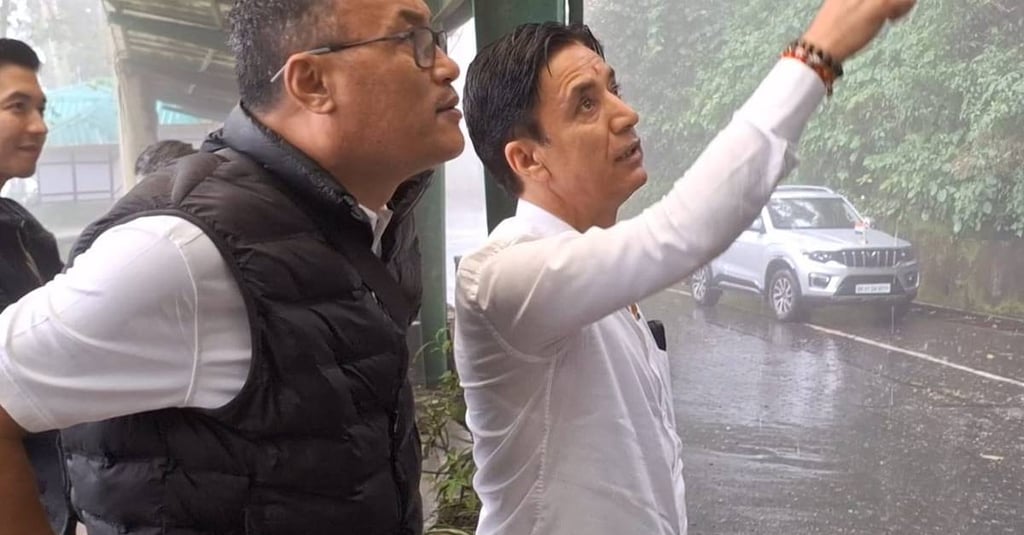Arun Upreti inspects landslide-hit areas from Nam-Nam to Syari, calls for urgent restoration work
Minister Upreti interacted with locals and took note of their grievances. Many residents expressed fear of further landslides, especially with more rainfall predicted in the coming days.
LOCAL


Sikkim’s Rural Development and Cooperative Department Minister, Arun Upreti, on Monday visited the landslide-affected areas stretching from Nam-Nam and Deorali to Syari Road in Gangtok to take stock of the damage caused by recent heavy rains. His visit comes amid growing concern over the safety of local residents and the need for swift restoration of basic infrastructure.
The Minister was joined by senior officials, including the Training Officer from the Disaster Management Cell (Gangtok), the Additional District Magistrate of Gangtok, the Secretary of the Public Health Engineering (PHE) Department, and the Assistant Engineer of the Urban Development and Housing Department (UD&HD). The inspection focused on critical spots where the landslides have either damaged the road or posed risks to nearby residential areas.
Minister Upreti interacted with locals and took note of their grievances. Many residents expressed fear of further landslides, especially with more rainfall predicted in the coming days. Upreti assured them that the government is fully aware of the situation and is taking immediate steps to address the crisis.
Speaking to the press, Upreti said, “Our first priority is to ensure the safety of the people living in these areas. We are working on immediate measures to stabilize the slopes and restore essential services like water supply and road connectivity. All concerned departments have been directed to work together to speed up the response.”
Officials from the PHE and UD&HD departments provided on-the-ground updates regarding blocked drains, broken pipelines, and the risks of erosion due to loose soil. The Disaster Management team also suggested the use of temporary retaining structures in highly vulnerable spots to prevent further damage until long-term solutions can be implemented.
